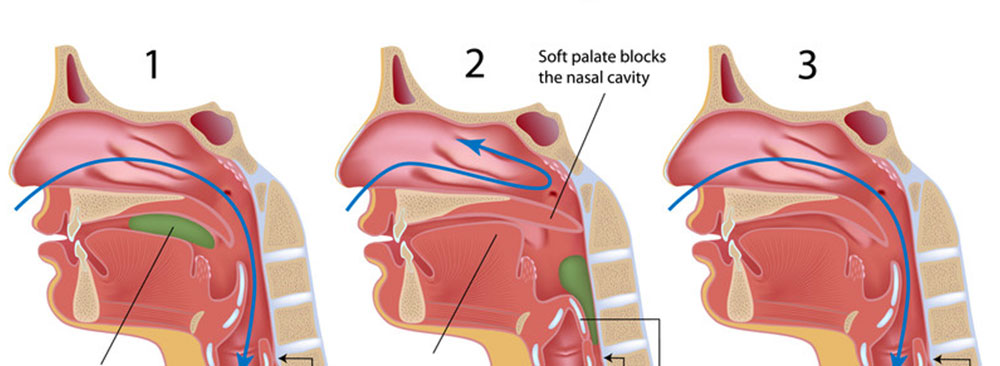What are swallowing disorders?
Dysphagia (swallowing disorders), can occur at different stages in the swallowing process:
- Oral phase – sucking, chewing, and moving food or liquid into the throat
- Pharyngeal phase – starting the swallowing reflex, squeezing food down the throat, and closing off the airway to prevent food or liquid from entering the airway (aspiration) or to prevent choking
- Oesophageal phase – relaxing and tightening the openings at the top and bottom of the feeding tube in the throat (oesophagus) and squeezing food through the oesophagus into the stomach
What are some signs or symptoms of swallowing disorders?
General signs may include:
- coughing during or right after eating or drinking
- wet or gurgly sounding voice during or after eating or drinking
- extra effort or time needed to chew or swallow
- food or liquid leaking from the mouth or getting stuck in the mouth
- recurring pneumonia or chest congestion after eating
- weight loss or dehydration from not being able to eat enough




